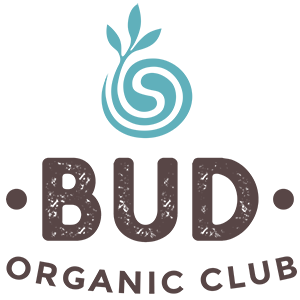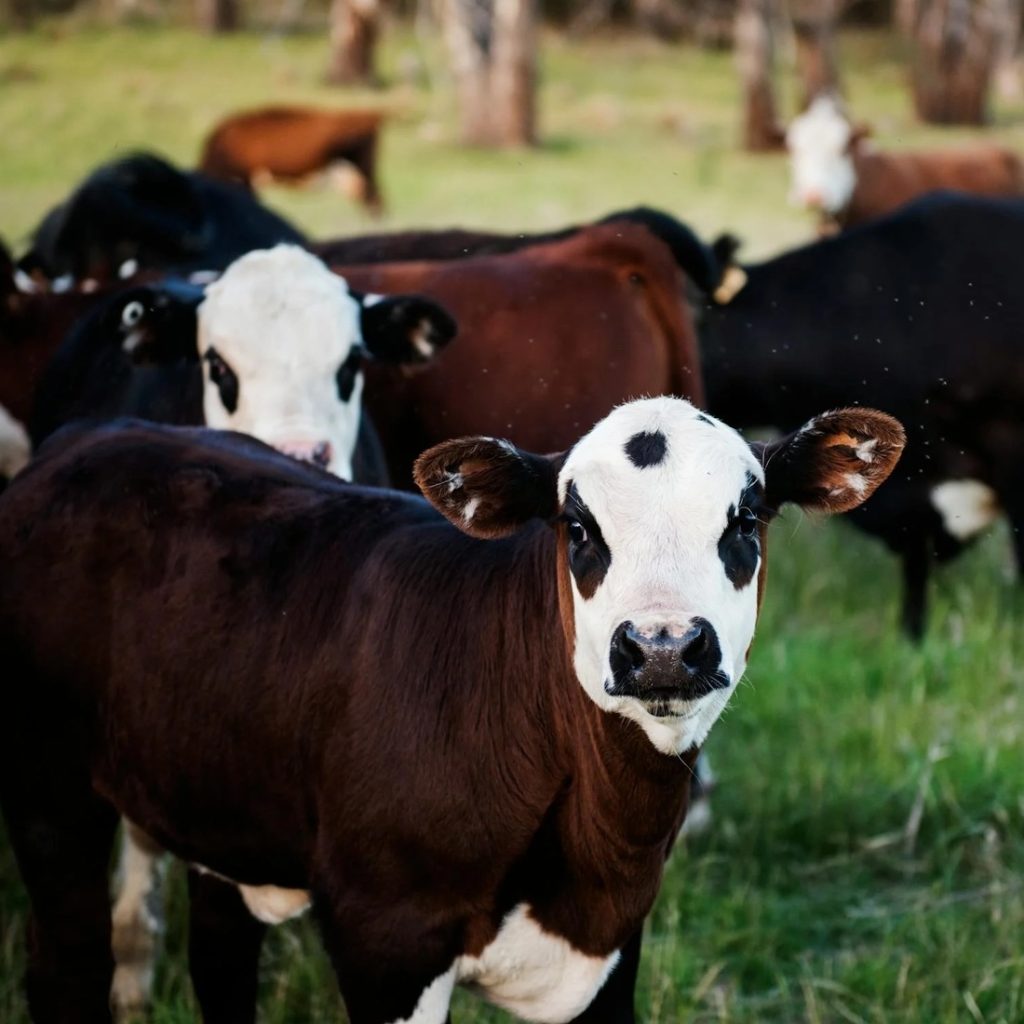It’s no secret organic farming promotes higher biodiversity and richer ecosystems, and organic farms are more resilient to variations in climate because their methods increase water conservation and stimulate soil health.
Farmers producing certified organic livestock follow strict animal welfare standards, and farmers growing certified organic fresh fruit and vegetables use sustainable farming methods that imitate natural ecological processes.
To celebrate Australian Organic Awareness Month, we took a closer look at the benefits and challenges of growing certified organic vegetables and livestock.
Technology supports sustainable environmental outcomes
At Eldridge Fresh Organics, an hour from Adelaide, the Eldridge family are in their third generation as organic horticultural producers, growing a wide range of vegetables on 120 hectares of certified organic farms to supply local, interstate and export markets.
For the 2024 Young Organic Leader of the Year, Chelsea Eldridge, ‘treading softly’ means doing what she can to maximise the health of the soil and the environment, and harnessing the power of ag tech, to keep producing certified organic products year-round on her family’s farms at Murray Bridge.
Eldridge Fresh grows cucumbers, tomatoes, capsicums, potatoes, onions, cabbages, celery, chillis, snow peas, zucchini, cauliflower and eggplants, and Chelsea said even in the four years she’s been working in the business, the growth and yields of their certified organic crops have increased substantially.
Her father and CEO, Shane Eldridge, first started sending certified organic produce to Sydney wholesale markets in the early 2000s. His uncle had been the first in the family to start organic farming, concerned about the effects of the chemicals and practices used in conventional farming.
A pivotal moment in Shane’s organic journey was discovering the work of William Albrecht, a famous American professor who identified the direct link between soil quality, food quality and human health in the mid 1900s, and devised a model for healthy soils.
“Professor Albrecht was way before his time. He recommended getting the ratio right between calcium and magnesium in the soil. If you don’t have that balance right, that’s where salinity starts,” Shane explained.
The Eldridges also rotate their crop species, use cover crops, reduce tillage and recycle compost to build healthy soil. The absence of herbicides and pesticides, which can disrupt soil microbial communities, reduce earthworm populations and affect nutrient cycling processes, ensures optimal ecosystems and higher levels of moisture retention.
Controlling pests without resorting to chemicals is another challenge for certified organic horticulturalists. Organic farms are required to have a minimum of five per cent of their farmland dedicated to biodiversity areas, which provide environments for predatory insects like lady beetles and parasitic wasps that control aphids and caterpillars.
Technology supports sustainable environmental outcomes
While the key factor underpinning the Eldridge Fresh operation is soil health, technology is also playing a role in reducing waste and enhancing on-farm efficiencies, all of which benefit the environment.
To reduce waste, Eldridge Fresh Organics has replaced waxed cardboard and polystyrene cartons with recyclable products sourced from Disruptive Packaging, which has revolutionised the industry by producing calcium carbonate boxes that are 100 per cent recyclable, with closed-loop capabilities to create a circular economy.
In May 2024, the Eldridges became the first producers in Australia to harness the power of artificial intelligence (AI) to monitor and track greenhouse growing in real-time, through grant funding from the South Australian Government’s AgTech Growth Fund, which aims to enhance sustainability and efficiency in organic farming.
The digital ‘Greenhouse Gemini’ AI system optimises greenhouse conditions, manages crop rotations, and tracks produce through the cold chain process, reducing waste and improving resource use.
The project also collates data that could help to better understand the environmental impact of growing operations and potentially identify ways to offset emissions, through more efficient and environmentally responsible growing practices in the greenhouse and on-farm.
“Technology is crucial to addressing the challenges of higher temperatures and lower winter rainfall, and this AI software will help us manage these issues far more sustainably than ever before,” Shane Eldridge said.
“Incorporating AI into growing operations is a big leap forward in ensuring the long-term viability of organic farming.”
For the Eldridges, producing certified organic food requires an open mind and the ability to pivot to supply a volatile market, at the same time as meeting strict quality assurance and certification demands.
But the family and their employees are up for the challenge, Chelsea said.
“We are looking forward to more people choosing to buy certified organic food because it tastes better, it’s more nutritious and it’s produced sustainably under a strict certification system,” she said.
“My goal is to learn more about the sales side, particularly what customers are looking for and how to anticipate that and provide for it.”
Certified organic meat – good for your health
The same strict quality assurance and certification demands complied with by Eldridge Fresh Organics to produce vegetables also apply to certified organic livestock producers.
The Australian Certified Organic Standard (ACOS) is one of few national standards that addresses welfare in food and fibre production, stating that animals including poultry, pigs, sheep, goats and cattle must live, grow and breed naturally in groups appropriate to their species, with more space to roam compared to their non-organic counterparts.
Hear from AOL Operations and Technical Manager, Josefine Pettersson, below. Having worked in the EU and Australia, Josefine joined AOL to focus on standards development and market access, to further advance the organic industry.
Methods such as feedlotting (of cattle for extended periods), tail docking of pigs and battery farming of chickens are not allowed under organic standards, and we have specific regulations for minimum areas and pasture access, proactive preventative management, low stress handling, transport and slaughter.
In Australian supermarkets, 80 per cent of the beef sold is produced from cattle finished in a feedlot, however cattle in an organic system have access to healthy pasture, which in turn contributes to a thriving grassland ecosystem.
To naturally prevent and control parasites in an organic system, animals are moved regularly, promoting a regenerative grazing system where pasture isn’t overgrazed to the point of leaving bare ground.
This, in turn, can decrease soil temperature, reduce soil erosion, increase water retention and contribute to carbon sequestration through increasing organic matter in the soil, and it keeps livestock in optimal health.
The conclusive fact for shoppers to buy organic meat, I believe, is the nutritional benefit.
Animals that are allowed to graze on pasture have consistently higher polyunsaturated fat, omega-3s and other nutrients in their meat, compared to animals finished in a feedlot.
Currently, more than 75 per cent of the world’s antibiotic use is for livestock production, particularly in intensive farming systems where antibiotics are given both as treatment for infections and in low concentrations as a growth promotant, which is not permitted in certified organic systems.
And while price is a factor in shoppers being reluctant to devote their weekly budget to organics, what price do you put on your health?
Organic livestock farming doesn’t come without its complications. Reaching a good stocking balance, finding the right genetics and managing farms correctly in Australia can be challenging.
Organic producers pay additional certification and audit fees to prove they meet stringent standards, and they’re audited annually. Organic animal feed may be more expensive, and their livestock require larger areas of land per animal.
Organic farmers are putting in this work every day to provide consumers with healthy, sustainable meat free from artificial hormones, synthetic fertilisers, antibiotics and GMOs, so the price is worth it!

